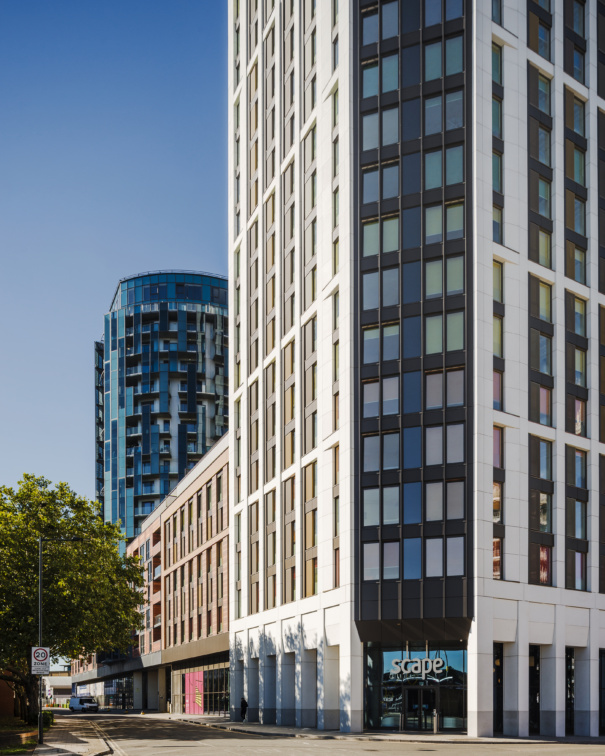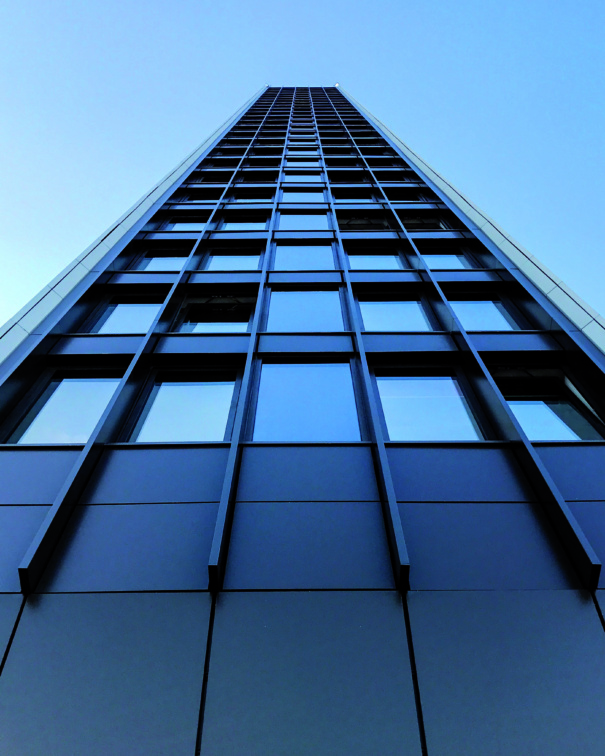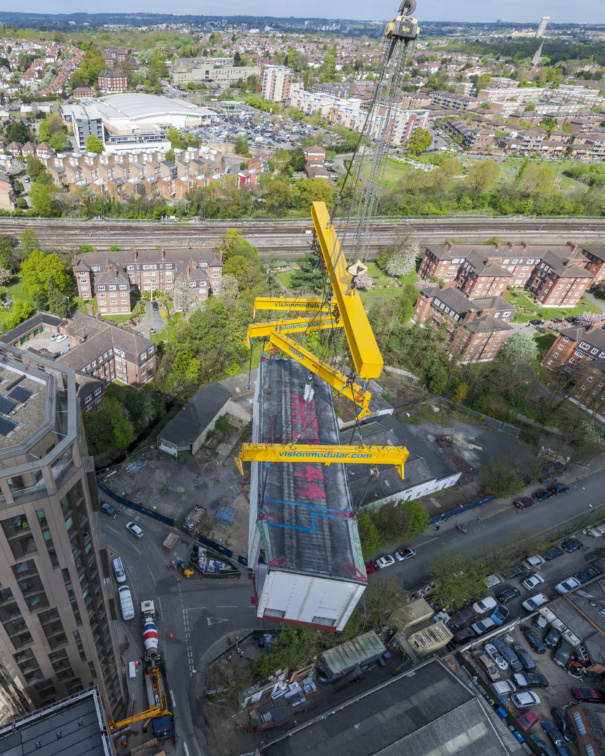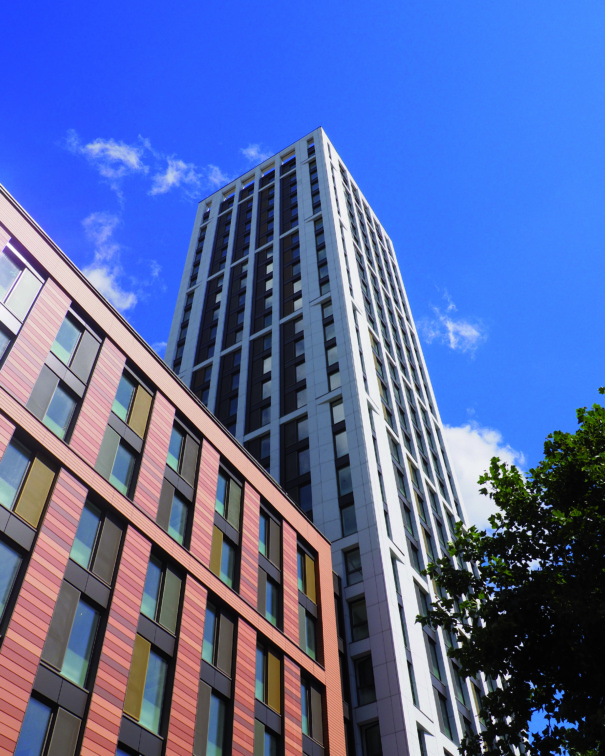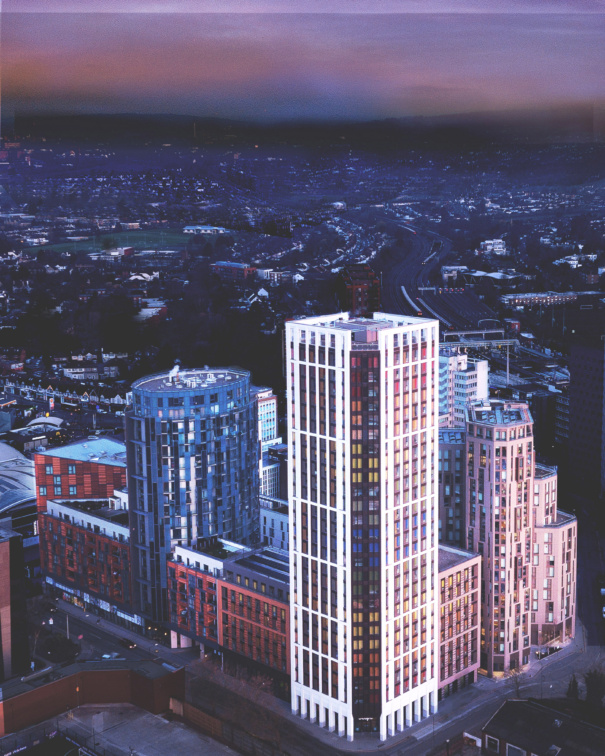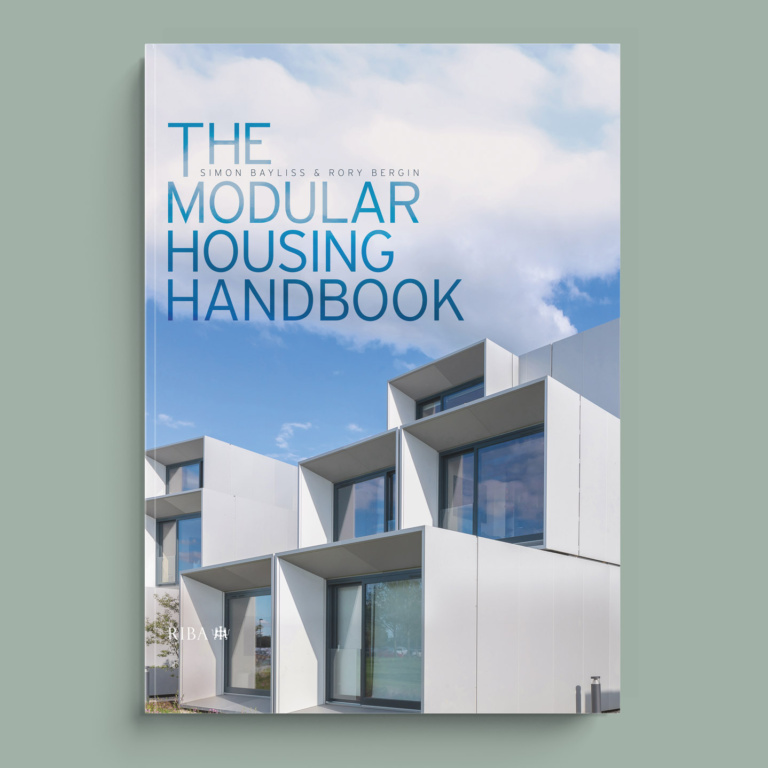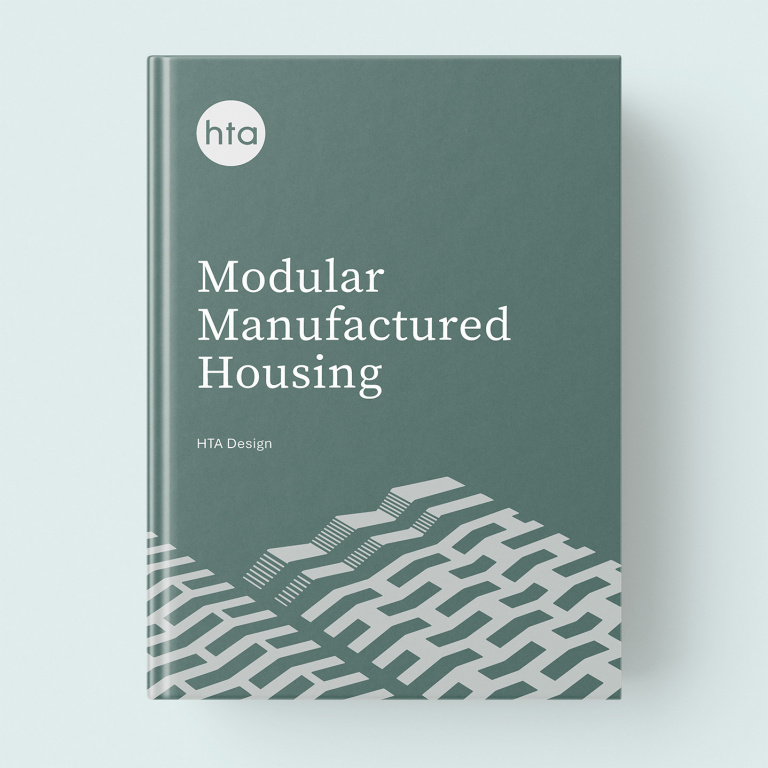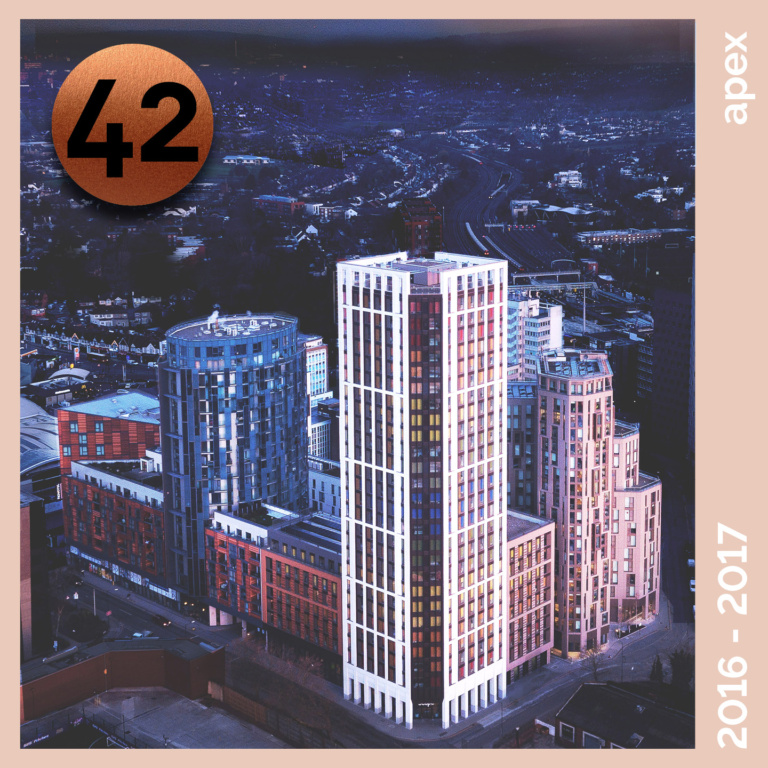Apex House in Wembley sets the standard for high rise student housing design. Completing the redevelopment of an entire urban block using volumetric construction by Tide and HTA, the project was delivered from concept to completion in 30 months, with work on site completed in 12 months. The building contains 558 student rooms with shared living spaces, generous internal amenity space, a sheltered courtyard garden, and management and maintenance facilities. Its refined white Glass Reinforced Concrete (GRC) cladding accentuates the tower’s verticality, featuring corners that highlight its symmetrical form when viewed from surrounding streets, effectively concealing the highly regular and repetitive accommodation within.

Apex House
Once the tallest volumetric building in Europe, Apex House was constructed in a remarkable twelve month period
One Place, Many Stories
Architecture

In what way does Apex House contribute to the architectural coherence of the urban block?
Apex House creates an ‘L’ shape of two flanking wings creating a street frontage to Albion Way and Fulton Road and linking in with the neighbouring buildings. The corner forms a landmark tower, and contains the single lift and stair core serving the building.
The façade is finished with terracotta tiling with aluminium cladding infill panels for the flanking wings and polished Glass-Reinforced Concrete with aluminium cladding infill panels for the tower. The colours of the wings blend in with the neighbouring buildings, and the tower is a dramatic white that accentuates its verticality.



How was the project innovative?
The cellular nature of student housing makes it ideal for volumetric construction as each room is provided with an en-suite bathroom. All rooms are delivered to site fully finished with even the bed installed, to a high quality of finish with all the services located on the corridor side of the units making them quick to install and easy to maintain.
HTA designed the project in Revit from the outset and coordinated the model with the other disciplines. The 679 units installed in Apex were manufactured at Vision’s factory in Bedford in a process similar to that used on a car production line. Every module is traced from start to finish in the production process to ensure a full audit trail is captured. The units were delivered by truck to site, using a small buffer site nearby to store modules temporarily.



Each unit is craned into position in a ten minute period and then fixed into position by a specialist installation team. At its peak, eleven units were being installed per day, which is the equivalent of four one-bed and one two-bedroom apartments.
An innovative mix for the GRC panels was used to meet our desire to increase the visual quality of the GRC material. It also meant that the finish of the panels was more robust and hard-wearing and would need less maintenance over its lifetime.



Sustainability & Building Physics
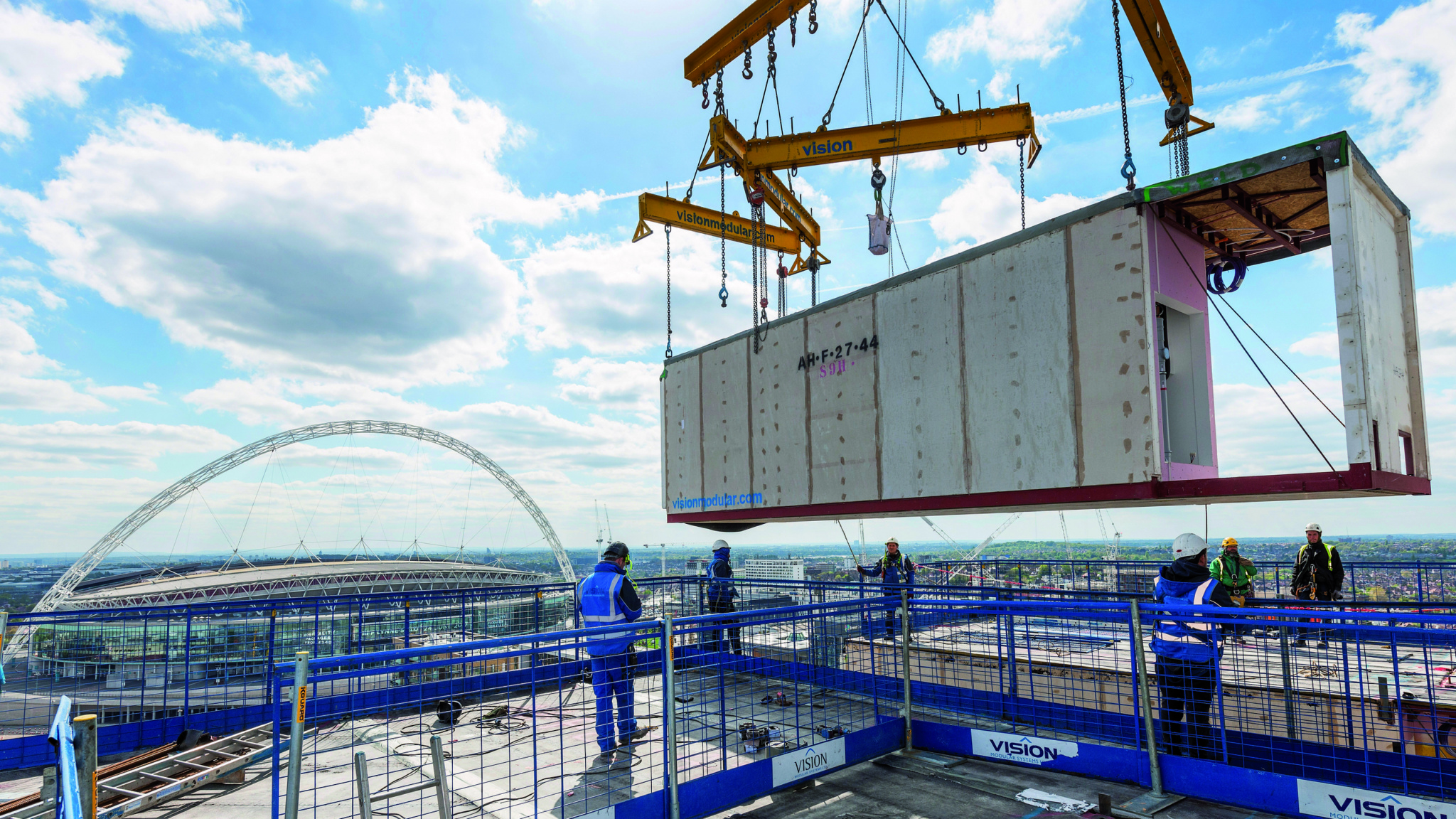
How did offsite construction increase quality and certainty of delivery?
There was a very low number of staff on site, typically just twenty people, with over 140 staff working in the factory. This means that factory processes which manage quality in construction, reduce waste, increase health and safety are all able to influence most of the construction effort. With 70% of the project value completed in the factory this means that the majority of the project is delivered more quickly, to higher quality standards than is possible with traditional construction.

How is this project sustainable?
The building achieves a BREAM Excellent rating under BREEAM New Construction 2011. Elements of the standard where the building scored highly include energy reduction and CO2 emissions due to the efficient gas-fired Combined Heat and Power system. The building will save 30.45% of CO2 emissions compared to a notional Building Regulations 2013 building. This amounts to a saving of 244 tonnes per annum. It is worth highlighting that there are numerous benefits of using modular construction including reusability and waste reduction contributed towards meeting this target and achieving a low life-cycle environmental impact.
Why modular works
The project team have worked together on a number of projects and now use volumetric construction as the default methodology. Apex the fourth project in the Wembley Regeneration Area to be delivered by the developer with HTA as architects, planning and sustainability consultants and landscape architects. Because the building is student housing we know that the speed of construction makes a business case for prefabrication as it enables us to design and construct the building up to a year faster than traditional methods. This enables us to hand over the project a year earlier to the operator and it starts to make a return in its investment more quickly than projects constructed traditionally.




Planning

How did HTA achieve a building that challenges the local context as a result of its height?
HTA successfully secured planning permission for the change of use from warehouse to student residential accommodation in March 2016. This building significantly challenged perceptions in relation to appropriate height and planning policy relating to height in Brent. We were able to – through the involvement of CABE – work with the Council on reaching appropriate support for a significant height increase of 10 storeys over and above local planning policy guidance at the time.
Apex House was originally a 2 storey warehouse building and we successfully negotiated planning permission for a 29 storey residential building with 558 student accommodation rooms on a site of 0.188 hectares. The site has a PTAL of 4/5.
Tide purchased the site on an unconditional basis and therefore needed to move quickly through the design and planning process. We advised Tide on the planning strategy for the site, and the fact that planning policy would allow a change of use. We advised on the need to consult with the London Borough of Brent and the GLA in advance of the submissions. Our knowledge of the area highlighted the opportunity for a major new development in place of the small warehouse. Officers were concerned about Councillors response to the scale of the building, being the largest in Wembley, and an important part of our work on the project was to convince officers of the quality of the accommodation and they should support the scheme to members. We identified that other emerging proposals in the Wembley area supported tall buildings on the site, and the proposals successfully fitted in with a new master plan for much of the Wembley area.



On our advice, Tide presented to the CABE review panel just prior to submission of the application, in order to provide reassurance to Brent that a building of this scale and height was appropriate and acceptable in this location. CABE supported both the height and architectural approach to the development.
The main challenges that we overcame in this application included:
- Confirming that the loss of the warehouse was acceptable in planning policy terms and that the regeneration benefits from the new student residential accommodation and new jobs significantly outweighed the loss of the existing use.
- Convincing the Council that a 29 storey building (the tallest in Wembley) was acceptable in terms of local protected views and streetscape.
- Demonstrating that this high density scheme provided acceptable living conditions in all rooms and that the impact on surrounding buildings was also acceptable.
- There were a number of objections from residents living close to the proposal, which required additional detailed analysis of the daylight/sunlight impact on adjoining residents, and confirmation of the internal quality of students’ rooms and communal spaces.
- The GLA raised issues relating to sustainability and affordable student housing and HTA’s Planning Team liaised with the Borough to agree a very low level of affordable student housing in the building in accordance. HTA addressed the Planning Committee to secure overwhelming political support for this scheme and planning permission was granted in July 2016.

